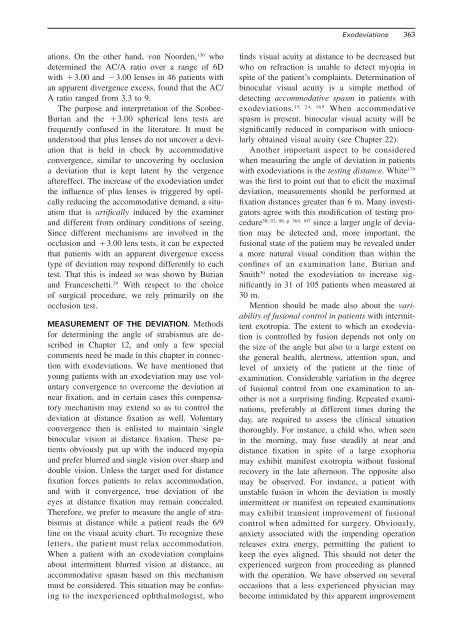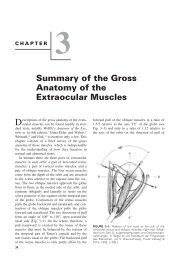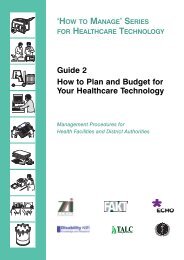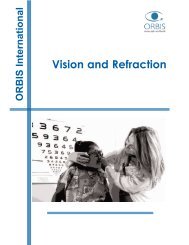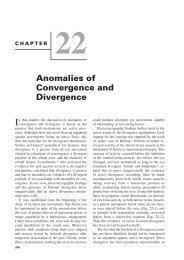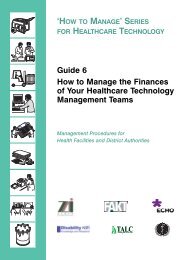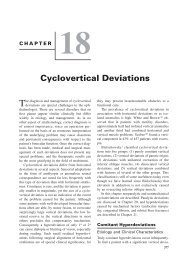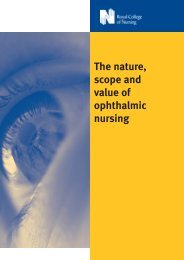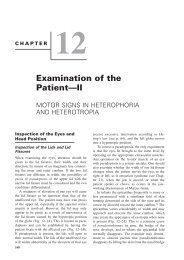Chapter 17: Exodeviations
Chapter 17: Exodeviations
Chapter 17: Exodeviations
Create successful ePaper yourself
Turn your PDF publications into a flip-book with our unique Google optimized e-Paper software.
<strong>Exodeviations</strong> 363ations. On the other hand, von Noorden, 136 whodetermined the AC/A ratio over a range of 6Dwith 3.00 and 3.00 lenses in 46 patients withan apparent divergence excess, found that the AC/A ratio ranged from 3.3 to 9.The purpose and interpretation of the Scobee-Burian and the 3.00 spherical lens tests arefrequently confused in the literature. It must beunderstood that plus lenses do not uncover a deviationthat is held in check by accommodativeconvergence, similar to uncovering by occlusiona deviation that is kept latent by the vergenceaftereffect. The increase of the exodeviation underthe influence of plus lenses is triggered by opticallyreducing the accommodative demand, a situationthat is artifically induced by the examinerand different from ordinary conditions of seeing.Since different mechanisms are involved in theocclusion and 3.00 lens tests, it can be expectedthat patients with an apparent divergence excesstype of deviation may respond differently to eachtest. That this is indeed so was shown by Burianand Franceschetti. 29 With respect to the choiceof surgical procedure, we rely primarily on theocclusion test.MEASUREMENT OF THE DEVIATION. Methodsfor determining the angle of strabismus are describedin <strong>Chapter</strong> 12, and only a few specialcomments need be made in this chapter in connectionwith exodeviations. We have mentioned thatyoung patients with an exodeviation may use voluntaryconvergence to overcome the deviation atnear fixation, and in certain cases this compensatorymechanism may extend so as to control thedeviation at distance fixation as well. Voluntaryconvergence then is enlisted to maintain singlebinocular vision at distance fixation. These patientsobviously put up with the induced myopiaand prefer blurred and single vision over sharp anddouble vision. Unless the target used for distancefixation forces patients to relax accommodation,and with it convergence, true deviation of theeyes at distance fixation may remain concealed.Therefore, we prefer to measure the angle of strabismusat distance while a patient reads the 6/9line on the visual acuity chart. To recognize theseletters, the patient must relax accommodation.When a patient with an exodeviation complainsabout intermittent blurred vision at distance, anaccommodative spasm based on this mechanismmust be considered. This situation may be confusingto the inexperienced ophthalmologist, whofinds visual acuity at distance to be decreased butwho on refraction is unable to detect myopia inspite of the patient’s complaints. Determination ofbinocular visual acuity is a simple method ofdetecting accommodative spasm in patients with15, 24, 165exodeviations. When accommodativespasm is present, binocular visual acuity will besignificantly reduced in comparison with uniocularlyobtained visual acuity (see <strong>Chapter</strong> 22).Another important aspect to be consideredwhen measuring the angle of deviation in patientswith exodeviations is the testing distance. White <strong>17</strong>9was the first to point out that to elicit the maximaldeviation, measurements should be performed atfixation distances greater than 6 m. Many investigatorsagree with this modification of testing procedure38; 92; 98, p. 364; 107 since a larger angle of deviationmay be detected and, more important, thefusional state of the patient may be revealed undera more natural visual condition than within theconfines of an examination lane. Burian andSmith 30 noted the exodeviation to increase significantlyin 31 of 105 patients when measured at30 m.Mention should be made also about the variabilityof fusional control in patients with intermittentexotropia. The extent to which an exodeviationis controlled by fusion depends not only onthe size of the angle but also to a large extent onthe general health, alertness, attention span, andlevel of anxiety of the patient at the time ofexamination. Considerable variation in the degreeof fusional control from one examination to anotheris not a surprising finding. Repeated examinations,preferably at different times during theday, are required to assess the clinical situationthoroughly. For instance, a child who, when seenin the morning, may fuse steadily at near anddistance fixation in spite of a large exophoriamay exhibit manifest exotropia without fusionalrecovery in the late afternoon. The opposite alsomay be observed. For instance, a patient withunstable fusion in whom the deviation is mostlyintermittent or manifest on repeated examinationsmay exhibit transient improvement of fusionalcontrol when admitted for surgery. Obviously,anxiety associated with the impending operationreleases extra energy, permitting the patient tokeep the eyes aligned. This should not deter theexperienced surgeon from proceeding as plannedwith the operation. We have observed on severaloccasions that a less experienced physician maybecome intimidated by this apparent improvement


